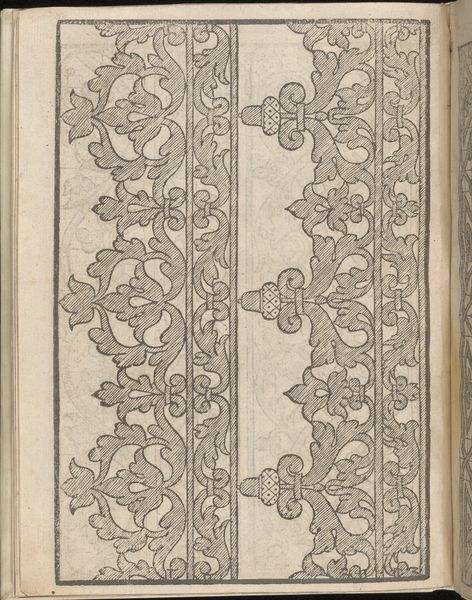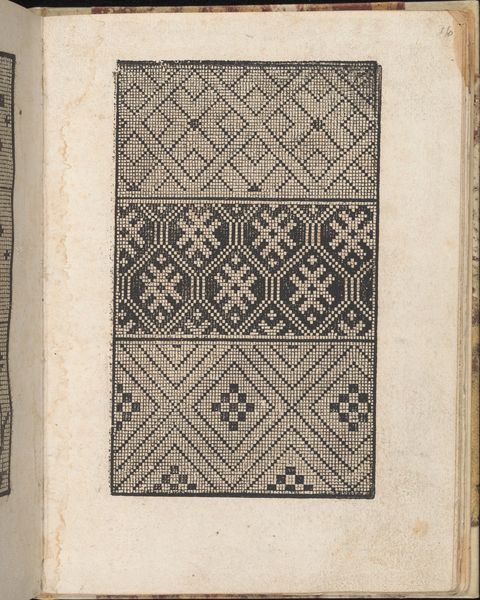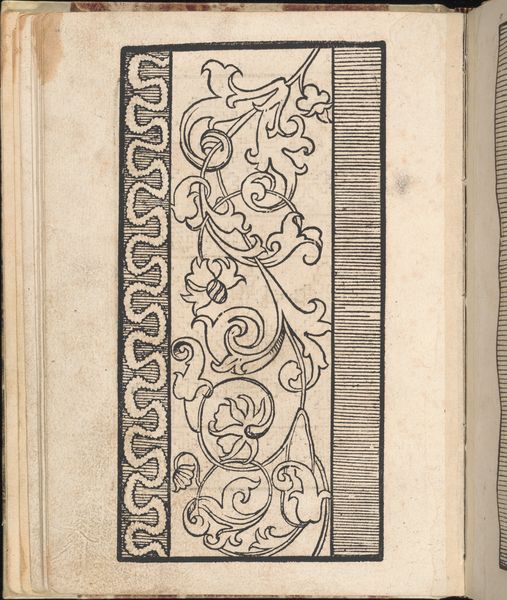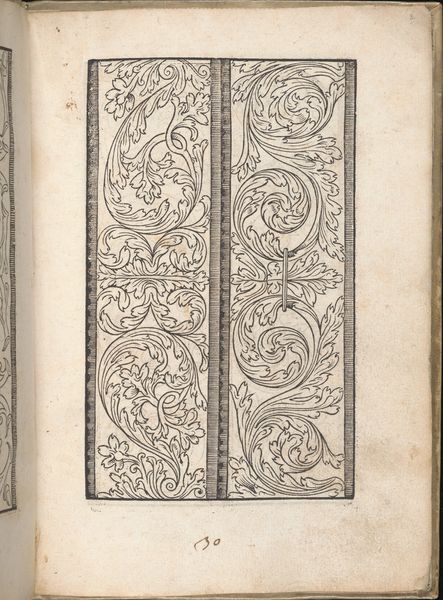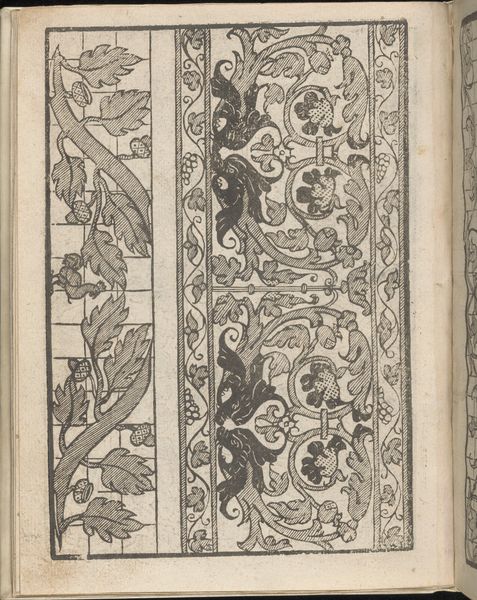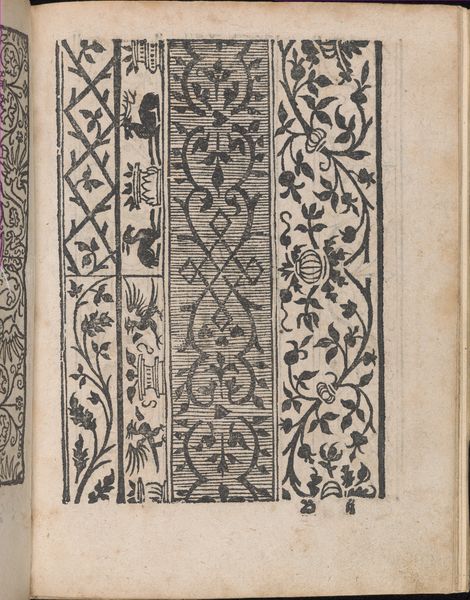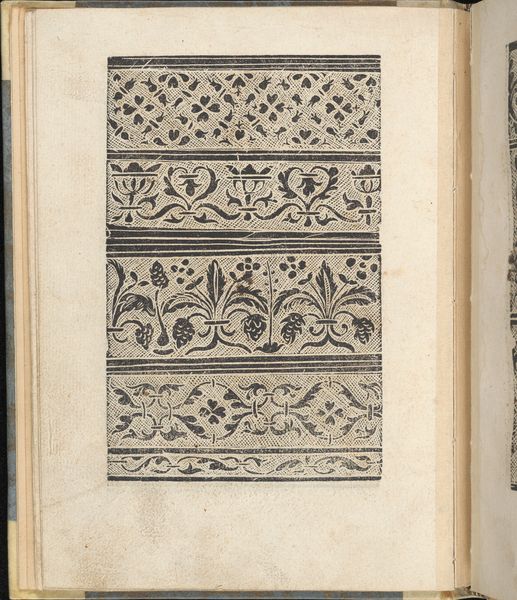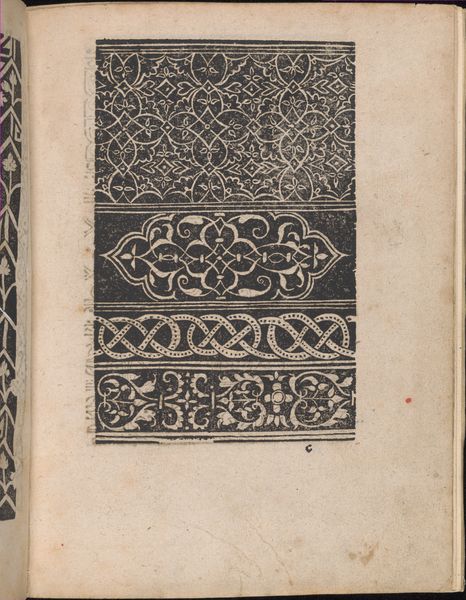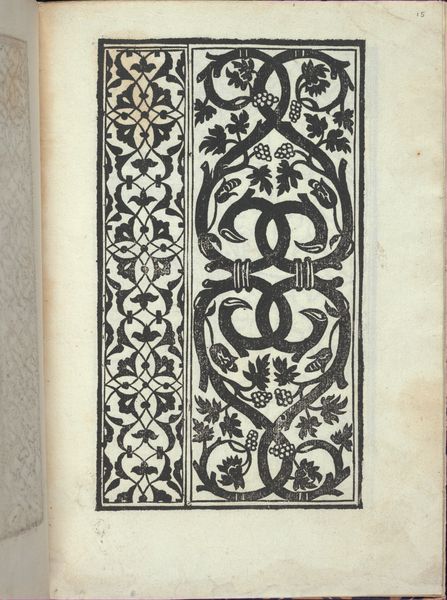
Ein new getruckt model Büchli...Page 21, verso 1529
0:00
0:00
drawing, ornament, print, paper, woodcut
#
drawing
#
ornament
#
toned paper
# print
#
gothic
#
paper
#
woodcut
Dimensions: Overall: 7 7/8 x 6 1/8 in. (20 x 15.5 cm)
Copyright: Public Domain
Curator: Look at this intriguing page from "Ein new getruckt model Büchli," specifically page 21 verso, created in 1529 by Johann Schönsperger the Younger. Editor: Immediately, the patterns draw me in. There’s this captivating rhythm. It is so intricate and contained all at once. You see the way that black ink pops against the muted tone of the paper. It makes me curious about how such a precise pattern was actually crafted. Curator: Crafted indeed, as a woodcut print! This level of detail carries cultural echoes too, doesn't it? Think about how ornamental patterns signified status and learning in the 16th century. It is so interesting to consider the purpose this design served. Editor: Absolutely! And considering the means of its production makes me question the accessibility of art at that time. Was this pattern book intended for widespread use, equipping artisans? What implications does that have on the circulation of style and craft? Curator: The circulation is the key. These books democratized design to a certain extent, disseminating motifs widely that were, up until that point, isolated regionally. Think of it almost as a visual lingua franca spreading across territories, adapting and changing with each new setting. Editor: Visual languages spread by means of accessible technologies; woodcut makes the spread happen. However, I would argue that there’s also an economic power dynamic embedded here. The artist relies on labor, the consumption of material, to bring art to people’s homes. How might this influence the patterns we are actually seeing? Curator: An interesting lens. It makes one think about this ornamental design. It certainly doesn't exist in a vacuum, divorced from function or intent. Its cultural utility speaks volumes. Editor: So while I'm initially pulled in by the visual appeal of this print—it’s so nice to follow the lines—I’m also led to ask, how does such a precise craft intersect with the daily existence of artists at that time? Curator: This dialogue really brought this deceptively simple page to life for me; by merging discussions of cultural impact and artistic application, a new perception of the book has emerged. Editor: I concur! This was a refreshing examination of pattern as material expression within social frameworks of 16th century Germanic craft.
Comments
No comments
Be the first to comment and join the conversation on the ultimate creative platform.


